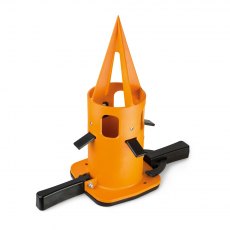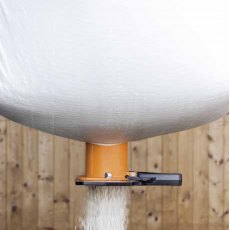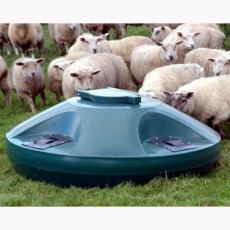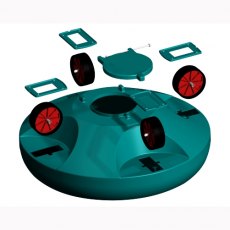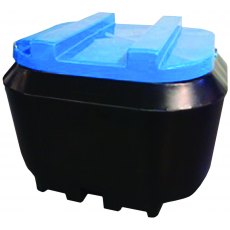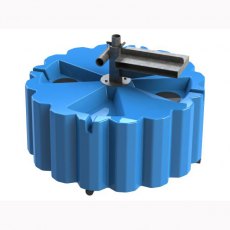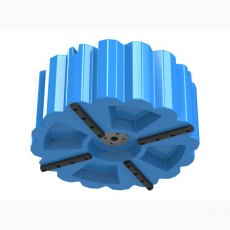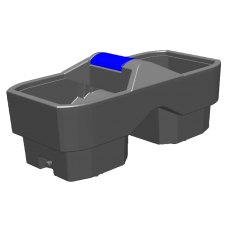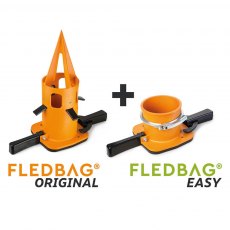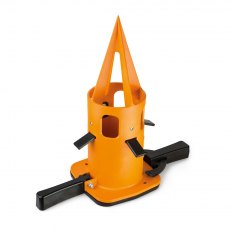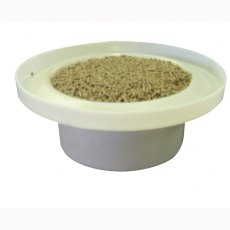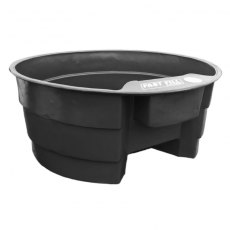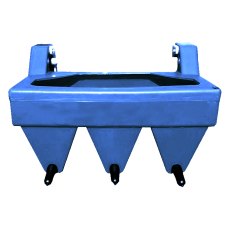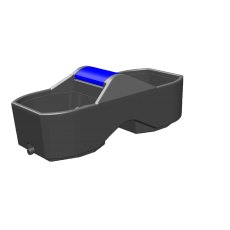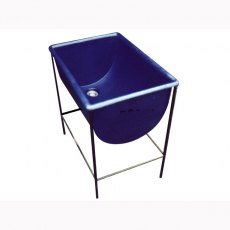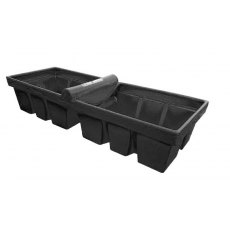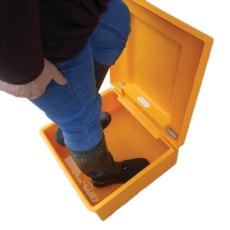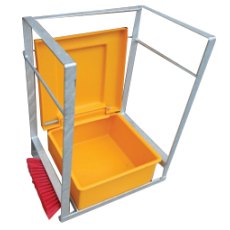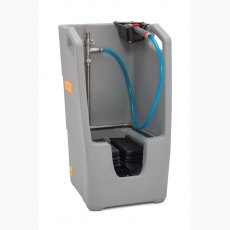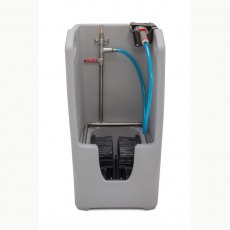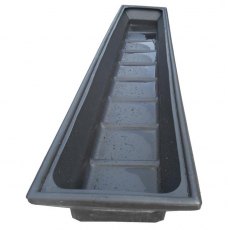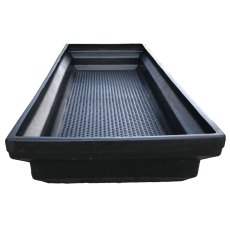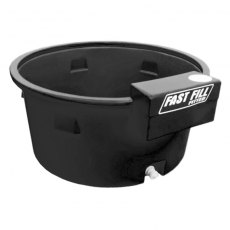Farming Calendar

Farming Calendar 2024

Livestock Care:
- House sheep
- Calves weaned
- Ensuring adequate feed and water for livestock during colder weather.
- Monitoring animal health closely, especially for signs of winter illnesses.
- Planning for calving and lambing season, preparing facilities and equipment.
Maintenance:
- Servicing and repairing farm machinery and equipment during the quieter winter period.
- Checking and maintaining tractors, ploughs, and other essential tools.
- Repairing and maintaining farm buildings, fences, and pathways.
- Improving drainage systems to prevent waterlogging in fields.
Crop Planning and Preparation:
- Ordering seeds and planning crop rotations for the upcoming planting season.
- Preparing greenhouses and polytunnels for early sowing of certain crops.
- Spread slurry
Soil Management:
- Conducting soil tests to determine nutrient levels and plan fertilizer use.
- Implementing measures to protect soil from erosion during wetter months.
Livestock Management:
- Continuing to provide feed and shelter for livestock during the cold weather.
- Beginning early calving and lambing, with round-the-clock monitoring and care.
- Sheep pregnancy scanning & housing
- Ensuring adequate supplies of bedding to maintain animal warmth and comfort.
Pre-Spring Field Work:
- Preparing fields for early spring sowing, weather permitting.
- Applying lime to fields as required based on soil test results.
- Managing cover crops and planning for their incorporation into the soil.
- Spread slurry
Maintenance:
- Finalizing the repair and maintenance of planting and cultivation equipment.
- Calibrating seed drills and checking irrigation systems for the upcoming season.
- Continuation of maintenance and repair work on buildings and fences as needed.
- Ensuring proper drainage in fields to avoid waterlogging.
Fertilizer and Pesticide Management:
- Planning and purchasing fertilizers and pesticides for the season.
- Storing chemicals safely and in compliance with regulations.
Crop Planning:
- Finalizing crop rotation plans and ordering remaining seeds.
- Starting seedlings indoors or in protected environments for early transplant.
Horticulture Activities:
- Pruning fruit trees and bushes to promote healthy growth.
- Preparing vegetable beds and planting early crops under cover.
Livestock and Calving:
- Continuation of calving and lambing, with vigilant monitoring for health issues.
- Beginning to turn livestock out to pasture as weather permits.
- Vaccinating and tagging new calves and lambs.
Field Work and Crop Sowing:
- Starting the sowing of spring crops like barley, oats, and wheat as soil conditions allow.
- Drill sugar beet
- Ploughing and harrowing fields to prepare for planting.
- Applying early fertilizers to winter crops and newly sown fields.
Pasture Management:
- Assessing pasture condition and planning for reseeding or fertilization.
- Managing grass growth with controlled grazing or mowing.
Maintenance:
- Ensuring all planting equipment is ready for peak spring use.
- Calibrating sprayers and other application equipment.
- Finishing any outstanding repair work on buildings, fences, and pathways.
- Checking and repairing water systems for livestock and irrigation.
Horticulture and Vegetable Gardening:
- Planting early potatoes, onions, and other hardy vegetables.
- Preparing polytunnels and greenhouses for planting.
-
Livestock Management:
- Moving livestock to pasture as weather consistently improves.
- Monitoring animal health during the transition from indoor to outdoor feeding.
- Implementing parasite control measures for livestock.
-
Calving and Lambing:
- Continuing with the tail end of the calving and lambing season.
- Ear tagging, dehorning, and vaccinating young animals as required.
-
Field Work and Sowing:
- Sowing maincrop potatoes, spring cereals, and forage crops.
- Continuing ploughing, harrowing, and preparing land for late spring planting.
- Applying fertilizers and herbicides to emerging crops.
- Drilling oil seed and vining peas
- Spray cereals and sugar beet
-
Grassland Management:
- Implementing rotational grazing strategies to optimize grass growth.
- Fertilizing pastures to boost grass production for grazing and silage.
-
Crop Protection:
- Monitoring crops for pests and diseases and applying treatments as needed.
- Weed control in both crop fields and pasturelands.
-
Machinery Maintenance:
- Regular maintenance checks on machinery in heavy use, like tractors and seeders.
- Preparing silage-making equipment for the upcoming season.
-
Horticulture Activities:
- Planting out hardened-off seedlings in vegetable gardens and polytunnels.
- Tending to fruit trees and bushes, ensuring they are free from pests.
-
Infrastructure Maintenance:
- Ensuring fences, gates, and water troughs are in good condition for grazing animals.
- Maintaining farm roads and paths for easy access to fields.
Silage Preparation:
- Cutting grass for the first silage of the season, weather permitting.
- Ensuring silage-making machinery is ready for use.
Crop Management:
- Continuing to sow late spring crops, such as maize.
- Monitoring crop growth and applying fertilizers, herbicides, and pesticides as needed.
- Weed control in crop fields to ensure optimal growth conditions.
- Spray potatoes, cereals, sugar beets and peas.
Livestock Management:
- Rotational grazing to manage grass growth and maintain pasture quality.
- Monitoring livestock health as they graze, including parasite control.
- Breeding management for dairy and beef herds.
Sheep Flock Management:
- Shearing sheep to prepare them for warmer weather.
- Managing lamb growth and health, including necessary vaccinations.
- Lambs tailed, castrated, ear-notched and ear-tagged
Horticulture Activities:
- Planting summer vegetables and maintaining polytunnels and greenhouses.
- Tending to fruit gardens, ensuring optimal growth conditions.
Biodiversity and Environmental Practices:
- Implementing and maintaining measures for wildlife conservation.
- Ensuring compliance with environmental regulations in farming practices.
Infrastructure Maintenance:
- Regular checks and repairs on fences, especially in grazing areas.
- Upkeep of farm buildings and storage facilities.
Farm Safety:
- Ensuring all safety protocols are in place, particularly during busy periods.
- Checking and maintaining safety equipment.
Haymaking and Silage:
- Cutting and baling hay in suitable weather conditions.
- Continuing with silage production as grass growth peaks.
Crop Care and Maintenance:
- Monitoring crops for growth, pests, and diseases, and applying treatments as necessary.
- Thinning and weeding root crops and vegetables to ensure optimal growth.
- Irrigate potatoes.
Livestock Management:
- Ongoing rotational grazing to maintain pasture quality.
- Monitoring animal health, particularly for signs of summer-related issues like heat stress or parasites.
- Managing dairy cows for peak milk production.
- Spring calves de-horned.
Sheep Management:
- Continuation of sheep shearing if not completed in May.
- Managing lambs, potentially beginning weaning processes.
Machinery Maintenance:
- Ensuring that harvesting and baling equipment are in optimal condition.
- Regular maintenance checks on tractors and other heavily used machinery.
Horticulture and Vegetable Gardening:
- Harvesting early summer vegetables and planting late summer crops.
- Regular watering and care of vegetable plots and fruit gardens.
Biodiversity and Environmental Management:
- Implementing sustainable farming practices to enhance soil health and biodiversity.
- Maintaining and creating habitats for wildlife, like wildflower meadows.
Building and Infrastructure Upkeep:
- Repairing and maintaining farm buildings, sheds, and storage facilities.
- Ensuring that water systems are functioning properly for both crops and livestock.
Hay and Silage Making:
- Continuing with haymaking, weather permitting.
- Second cut of silage if grass growth has been sufficient.
- Baling and carting straw
Crop Harvesting and Management:
- Beginning the harvest of early cereals, such as winter barley.
- Monitoring and treating crops for pests and diseases as needed.
- Weeding and maintaining vegetable plots and orchards.
- Irrigate and spray potatoes.
- Vining peas.
Livestock Management:
- Continued rotational grazing for optimal pasture management.
- Monitoring livestock for health issues, particularly parasitic infections.
- Managing dairy cows to maintain milk production levels.
Sheep Flock Care:
- Completing any remaining sheep shearing.
- Managing lambs, potentially selling or moving them to different pastures.
- Lambs vaccinations and footbaths.
Machinery and Equipment Maintenance:
- Ensuring harvest equipment is in good working order.
- Regular maintenance of tractors and other machinery used in daily operations.
Horticulture Activities:
- Harvesting summer fruits and vegetables.
- Planting late-season crops for autumn harvest.
Biodiversity and Environmental Efforts:
- Implementing measures to support biodiversity, such as maintaining hedgerows.
- Monitoring and managing water usage, especially in dry conditions.
Farm Infrastructure:
- Checking and repairing fences, especially in grazing areas.
- Maintaining and cleaning storage facilities for upcoming harvests.
Harvesting Crops:
- Continuing the harvest of cereals like wheat, oats, and barley.
- Harvesting root crops and late-summer vegetables.
- Gathering fruits from orchards and gardens.
Hay and Silage Making:
- Completing any remaining haymaking.
- Possible third cut of silage, depending on grass growth and weather conditions.
- Combine harvest cereals, bale and cart straw.
Livestock Management:
- Continued grazing management, moving livestock as necessary to optimize grass utilization.
- Weaning lambs and calves and beginning to prepare them for market or moving them to different pastures.
- Monitoring and treating any health issues, particularly those related to late summer conditions.
Machinery and Equipment:
- Maintaining and repairing harvesting equipment.
- Preparing machinery for autumn cultivation and sowing.
Soil and Field Management:
- Beginning soil testing and preparation for autumn sowing.
- Implementing crop rotation and planning for cover crops.
Horticulture and Gardening:
- Continuing to harvest and process fruits and vegetables.
- Preparing for autumn planting in vegetable gardens and greenhouses.
Biodiversity and Environmental Stewardship:
- Planning and implementing measures for wildlife conservation and habitat management.
- Assessing and managing the farm's environmental impact.
Infrastructure Maintenance:
- Repairing and preparing buildings and storage facilities for autumn and winter.
- Checking and maintaining water systems and fencing.
Harvesting:
- Completing the harvest of cereals, potatoes, and other late-season crops.
- Gathering and storing fruits from orchards.
- Combine harvest cereals, bale and cart straw.
Livestock Management:
- Beginning to house some livestock, particularly in areas with early onset of wetter, colder weather.
- Selling or moving weaned lambs and calves.
- Implementing autumn health treatments for livestock, such as de-worming.
- Wean lambs.
Field Work:
- Ploughing and preparing fields for winter crops.
- Sowing winter cereals like wheat and barley.
- Managing and incorporating stubble and crop residues.
- Harvest potatoes.
- Drill winter wheat, oilseed rape and barley.
Soil Fertility:
- Conducting soil tests to guide fertilizer and lime applications.
- Applying nutrients and conditioners as needed based on soil analysis.
Machinery and Equipment Maintenance:
- Conducting post-harvest maintenance on machinery.
- Preparing and calibrating sowing and ploughing equipment for autumn use.
Horticulture and Vegetable Gardening:
- Planting overwintering vegetables and garlic.
- Preparing greenhouses and polytunnels for winter crops.
Biodiversity and Environmental Care:
- Planting and managing cover crops to improve soil health and prevent erosion.
- Continuing with wildlife conservation efforts, such as maintaining bird feeders and habitats.
Farm Infrastructure:
- Checking and preparing winter housing for livestock, including ventilation and bedding.
- Repairing and reinforcing fences, gates, and water systems.
Late Harvesting:
- Completing the harvest of late-season crops like potatoes and root vegetables.
- Gathering remaining fruits and preparing orchards for winter.
Livestock Management:
- Wean and house cattle and other livestock as weather conditions become harsher.
- Checking and improving livestock housing conditions for winter.
- Managing breeding programs for cattle and sheep.
- Ewes dipped and wool clipped
- Wether lambs sold
Winter Crop Sowing:
- Sowing winter wheat, barley, and other cereals.
- Planting cover crops to improve soil health and prevent erosion.
Soil and Field Management:
- Conducting post-harvest soil tests and planning nutrient management.
- Ploughing and preparing fields for next year's crops.
- Cultivate arable fields.
- Harvest potatoes and sugar beet
Machinery Maintenance:
- Storing and conducting maintenance on harvest equipment.
- Preparing ploughs and winter sowing machinery for use.
Horticulture and Gardening:
- Planting hardy winter vegetables and caring for polytunnel crops.
- Pruning and maintaining fruit trees and bushes.
Environmental Stewardship:
- Implementing sustainable farming practices for soil conservation.
- Enhancing farm biodiversity through habitat management.
Infrastructure Upkeep:
- Repairing and winter-proofing buildings, roads, and drainage systems.
- Checking and maintaining water systems for livestock.
Livestock Care:
- Ensuring all livestock are comfortably housed with adequate bedding and ventilation.
- Regularly feeding and checking the health of housed animals.
- Managing breeding programs, particularly for sheep flocks.
- Tup sales
Winter Crop Management:
- Monitoring winter cereals for growth and health.
- Applying fungicides or pesticides as needed, weather permitting.
- Ploughing.
- Late drilling of wheat.
- Sell corn and arrange collection ex farm storage.
Soil Testing and Fertility:
- Conducting soil tests to inform next year's fertilization plans.
- Applying lime to fields if weather conditions allow.
Machinery and Equipment Upkeep:
- Conducting thorough maintenance and repairs on all farming machinery.
- Winterizing equipment that will not be used until spring.
Farm Infrastructure Maintenance:
- Repairing and reinforcing farm buildings, sheds, and animal housing.
- Ensuring adequate drainage in fields to prevent waterlogging.
Horticulture and Vegetable Gardening:
- Harvesting late-season and winter vegetables.
- Preparing polytunnels and greenhouses for winter.
Environmental and Wildlife Protection:
- Implementing measures to protect farm biodiversity during winter.
- Maintaining bird feeders and wildlife shelters.
Planning for Next Year:
- Reviewing this year's farm performance and planning for next year’s crop rotations and livestock management.
- Ordering seeds and other supplies for the next growing season.
Livestock Management:
- Providing adequate feed and water to housed livestock.
- Monitoring animal health, including regular checks for any signs of illness.
- Managing the breeding cycles of sheep and cattle.
Winter Crop Care:
- Monitoring winter sown crops for frost damage and pests.
- Planning for any early spring fertilization or treatment needs.
- Spray cereals.
- Ploughing.
Machinery and Equipment Maintenance:
- Conducting detailed checks and repairs on tractors, ploughs, and other machinery.
- Ensuring that all machinery is properly stored and protected from winter weather.
Farm Infrastructure:
- Checking and maintaining the integrity of farm buildings, particularly roofs and insulation.
- Ensuring pathways and roads are clear of ice and safe for use.
Planning and Budgeting for Next Year:
- Reviewing the past year's performance and planning crop rotations for the next season.
- Finalizing budgets and ordering seeds and supplies for the spring.
Environmental Stewardship:
- Continuing to support farm biodiversity through the winter, such as maintaining habitats and feeding wildlife.
- Implementing or planning sustainable practices for the upcoming year.
Record Keeping and Compliance:
- Updating farm records, including livestock and crop data.
- Ensuring compliance with agricultural regulations and standards.
.jpg)
The Critical Role of Feeders and Drinkers in Irish Agriculture

TAMS 3 Targeted Agriculture Modernisation Schemes Grant Aid for Farmers

 Login
Login
